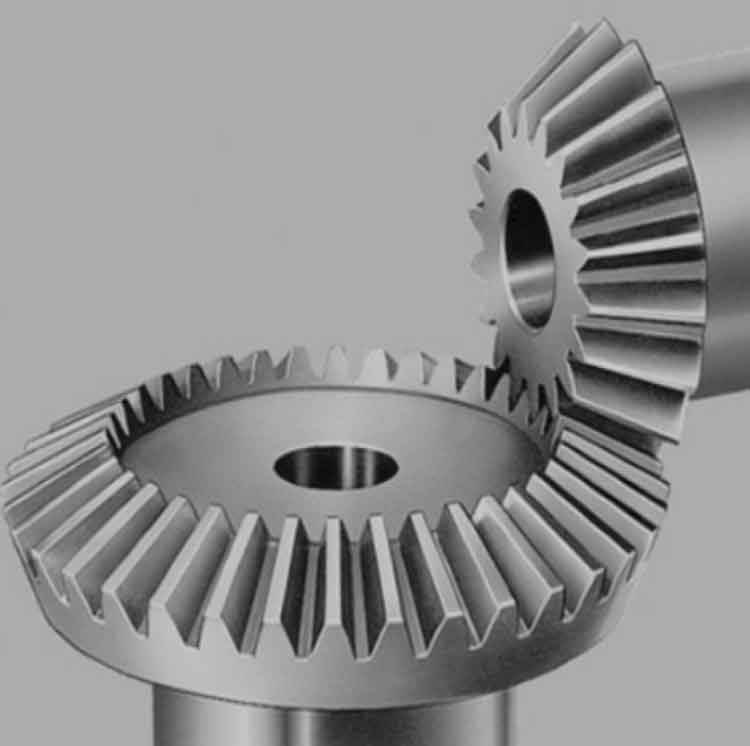Precision engineering is crucial in the design and manufacturing of straight bevel gears to ensure accurate and smooth gear meshing. Proper gear meshing is essential for reliable power transmission, reduced noise, and extended gear life. Here are some key aspects of precision engineering for straight bevel gears to ensure gear meshing accuracy:

1. Tooth Profile Design:
- The tooth profile of straight bevel gears is critical in achieving accurate gear meshing. Precise design parameters, such as the module, pressure angle, and tooth form, are determined based on the application’s requirements. Advanced software tools and simulation techniques are used to optimize the tooth profile to minimize interference and improve load distribution.
2. Gear Tooth Geometry:
- Precision engineering involves ensuring uniformity and consistency in the gear tooth geometry. Accurate tooth dimensions, such as pitch diameter, tooth width, and tooth thickness, are crucial for proper gear engagement and meshing. The gear tooth geometry should be within tight tolerances to prevent misalignment and noise issues.
3. Tooth Surface Finish:
- The surface finish of gear teeth significantly impacts gear meshing performance. Smooth and precise gear tooth surfaces are essential to reduce friction, wear, and noise during operation. Proper grinding, honing, or finishing techniques are employed to achieve the required surface quality.
4. Gear Material and Heat Treatment:
- The selection of suitable gear materials and proper heat treatment are critical for ensuring gear strength and durability. High-quality materials with excellent mechanical properties are chosen to withstand the applied loads and stresses during gear meshing. Heat treatment processes like carburizing or induction hardening are employed to improve the gear’s surface hardness and wear resistance.
5. Gear Tooth Alignment and Tolerances:
- Precise alignment of gear teeth is vital to ensure smooth and efficient gear meshing. Proper alignment reduces the risk of uneven wear and potential damage to the gears. Strict adherence to specified tolerances during manufacturing is essential to maintain accurate gear tooth alignment.
6. Quality Control and Inspection:
- Throughout the manufacturing process, strict quality control measures are employed to verify gear dimensions, tooth profiles, surface finish, and material properties. Inspection techniques like coordinate measuring machines (CMMs) and gear analyzers are used to assess gear accuracy and confirm compliance with design specifications.
7. Lubrication and Maintenance:
- Proper lubrication is crucial for smooth gear meshing and reduced friction. Regular maintenance and monitoring of gear performance help identify any issues early and prevent potential failures.
8. Noise and Vibration Analysis:
- Precision engineering also involves analyzing gear noise and vibrations during operation. By understanding the sources of noise and vibration, engineers can fine-tune gear designs to reduce noise levels and improve overall system performance.
Precision engineering is essential for straight bevel gears to ensure accurate gear meshing and optimal performance. From tooth profile design to material selection and quality control, every aspect of gear manufacturing is carefully considered to achieve smooth and efficient gear engagement. Well-designed and precisely manufactured straight bevel gears contribute to reliable and high-performance mechanical systems in various industries.
